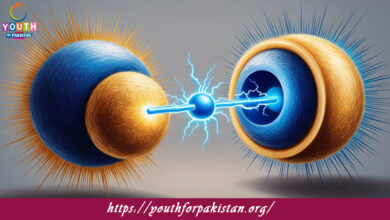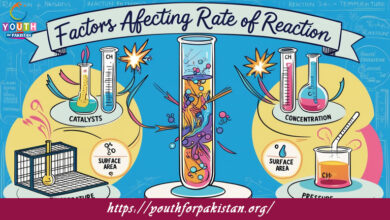Types Of Solids MDCAT Quiz with Answers

Types Of Solids MDCAT Quiz can be classified generally according to the arrangement of particles and the types of forces holding the particles together. There are two main categories: crystalline solids and amorphous solids, with further subdivision based on their bonding types and structures. The knowledge of the kinds of solids for the MDCAT students explains the physical properties and behaviors of various materials.
Crystalline Solids: The particles in crystalline solids—be it atoms, molecules, or ions—are arranged in a highly ordered and repeating manner. This regularity of arrangement gives rise to definite geometric shapes, sharp melting points, and well-defined faces. Crystalline solids can be further classified based on the nature of their bonding:
Ionic Solids: The ionic bonds hold together positively and negatively charged ions. This type of solids, therefore, are usually hard, somewhat brittle, with high melting points. Example: Sodium chloride, NaCl.
Covalent (Network) Solids: These solids are held together by covalent bonds in a continuous network, thus having high strength and high melting points. Example: Diamond.
Metallic Solids: In metallic solids, atoms are arranged in a regular lattice with a sea of free-moving electrons. These solids are good conductors of heat and electricity. Example: Copper (Cu).
Molecular Solids: These are the solids that are held together by intermolecular forces, such as van der Waals forces or hydrogen bonds. They generally have relatively lower melting points compared to other types. Example: Ice (H₂O).
Amorphous Solids: Amorphous solids, unlike crystalline solids, have no regular, repetitive pattern of particles. The atoms or molecules are arranged in an disordered way; hence, they do not have well-defined faces and sharp melting points. Amorphous solids soften over a range of temperatures rather than melting sharply. Examples include glass, rubber, and some plastics.
The strength and nature of the forces holding the particles together determine the properties of each type of solid. Such properties include melting points, hardness, electrical conductivity, and solubility. Understanding the Types of Solids is important for MDCAT students to explain the physical and chemical behaviors of different materials under different conditions.
MDCAT Quiz on Types of Solids
The MDCAT Quiz on Types of Solids tests students’ knowledge regarding the characteristics and behaviors of different solid structures. Students may be asked to identify examples of different types of solids, distinguish between crystalline and amorphous solids, and explain how the arrangement and bonding of particles affect the properties of solids. Practicing with this quiz will help students build a strong foundation for solving related problems in the MDCAT exam.
Free Flashcard for Types of Solids
Our free flashcard on the types of solids includes a succinct summary of crystalline and amorphous solids, including their classification and examples. The flashcards underscore the main differences among the various types of solids, including their bonding and properties. These flashcards are a good tool that a student could use to rapidly review and strengthen their understanding before the MDCAT examination.
Experience the real exam environment with our expertly designed collection of over 25,000 MCQs MDCAT Mock Tests.






